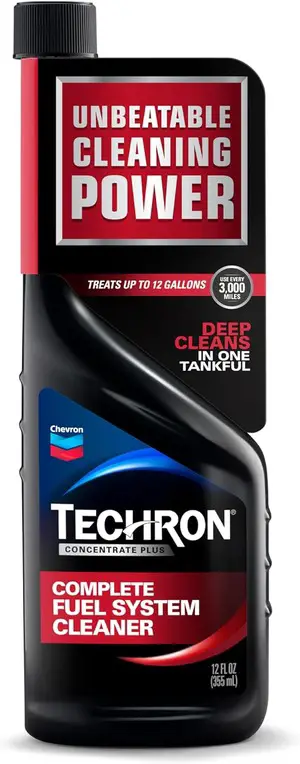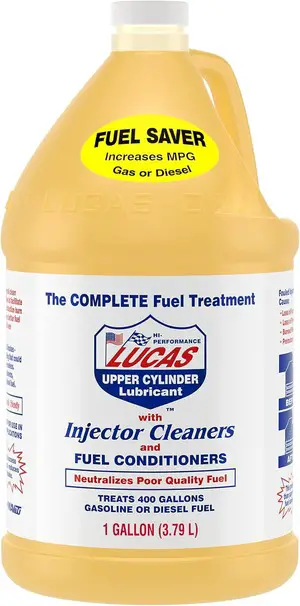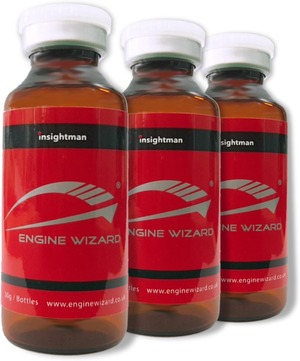How to Choose the Right Lawn Mower for Your Yard

Stuck on how to choose the right lawn mower for your yard? Did you know Consumer Reports’ lawn mower team cuts 500,000 square feet of grass? They use three different mowing modes and collect over 3,000 pounds of clippings. This thorough testing ensures their lawn mower ratings and recommendations are detailed. Choosing the right lawn mower can greatly improve your yard maintenance experience. This guide will help you find the perfect mower for your yard.
Key Takeaways:
- Understand the differences between walk-behind and riding mowers to choose the best option for your yard size
- Evaluate the essential features like drive system, cutting functions, and mower size to meet your specific needs
- Weigh the pros and cons of gas-powered, battery-powered, and electric lawn mowers to find the right power source
- Research reputable lawn mower brands and models to ensure quality, performance, and value
- Consider advanced features and innovations that can enhance your mowing experience
Choose Between Walk-Behind or Riding Mower
Choosing between a walk-behind mower and a riding mower affects how much time and effort you’ll need. The size of your yard is key in deciding which mower is best for you.
Calculate Your Yard Size
To figure out your lawn’s size, walk off large rectangles and count your steps.
“Men’s strides are about 30 inches, and women’s are around 26 inches. This gives a rough idea of how much you’ll need to mow.” – Sam, author of this blog
Walk Mowers for Yards Under 1/4 Acre
For lawns under 1/4 acre, a walk-behind mower is a good pick. These mowers offer many options for different needs and budgets. They can mulch, bag, or side discharge clippings, and come in push and self-propelled models.
Riding Mowers for Larger Yards
If your yard is bigger, from 1/4 of an acre to 2 acres, a riding mower is more comfortable and efficient. For yards over 2 acres, a commercial-duty zero-turn mower is best for quick and effective mowing.
| Yard Size | Recommended Mower Type |
|---|---|
| Under 1/4 acre | Walk-behind mower |
| 1/4 to 2 acres | Rear-engine riding mower, light-duty lawn tractor, or residential-duty zero-turn mower |
| Over 2 acres | Commercial-duty zero-turn mower |
“For yards from 1/4 of an acre to 2 acres, you’ll most likely be most comfortable with a rear-engine riding mower, light-duty lawn tractor, or residential-duty zero-turn mower.”
Key Features to Consider for Walk Mowers
When picking a walk-behind lawn mower, focus on two main things: the drive system and the cutting functions. Knowing these details helps you find the perfect mower for your yard and your style.
Drive System: Push vs Self-Propelled
Walk mowers have either a push or self-propelled drive.
Self-propelled mowers are easier for hills or bagging clippings. Front-wheel drive is good for flat areas with obstacles.
Rear-wheel drive is better for uphill and sidehill mowing.
Cutting Functions: Mulch, Bag or Discharge
Walk mowers can handle mulching, side or rear discharge, or bagging. Two-function mowers mulch and bag. Three-function mowers do all three. Mulching adds nutrients to the lawn but struggles with tall grass. Side discharging is great for keeping the lawn tidy.
Choosing the right drive and cutting functions is key for a beautiful lawn. By understanding these features, you can pick a mower that makes lawn care easier and more fun.
Select the Right Lawn Mower Size
Choosing the right lawn mower size is key for a good mowing experience. A 42cm mower deck size works for yards up to 300 square meters. A 49cm deck is best for up to 600 square meters, and a 56cm deck for up to 1000 square meters.
But, yard size isn’t the only thing to think about. A smaller mower is better for yards with lots of obstacles. Yet, a bigger deck can cut down mowing time for large areas.
| Yard Size | Recommended Mower Deck Size |
|---|---|
| Up to 300 square meters | 42cm |
| Up to 600 square meters | 49cm |
| Up to 1000 square meters | 56cm |
For yards under 3/4 of an acre, a walk-behind mower is a good pick. But, for bigger yards, a rear-engine riding mower or lawn tractor might be better. The best lawn mower size depends on your yard and what you like.

“Choosing the correct lawn mower size is essential for achieving a well-manicured lawn with minimal effort.” – Fin, website fan
Petrol, Cordless or Electric Mower
Lawn mowers come in three main types: petrol, cordless electric, and corded electric. Each has its own benefits and drawbacks. Think about these when picking the right mower for your yard.
Benefits of Petrol Lawn Mowers
Petrol mowers are powerful and consistent. They work well on all lawn sizes and types. But, they are louder and heavier than electric mowers.
Advantages of Cordless Mowers
Cordless electric mowers have improved a lot. They are quieter, lighter, and need less upkeep. They’re great for smaller yards under 5,000 square feet.
Modern cordless mowers are now a top choice for eco-friendly lawn care. But, they might not last as long as petrol mowers. You’ll need to replace the batteries every 2-3 years.
“Battery electric mowers are now just as powerful as gas-powered machines, and they’re quieter, cleaner, and require less maintenance.” – Sam Masser, author
When picking between petrol, cordless, or electric mowers, think about your yard size, mowing frequency, and what you prefer. Consider noise, emissions, and upkeep needs. This way, you can find the mower that suits you best.
Pick a Reputable Lawn Mower Brand
Choosing a good lawn mower brand is key. Look for brands like Hayter, Honda, Mountfield, and STIHL. They might cost more, but they last longer and come with better lawn mower warranties. They also have easy-to-find replacement parts and service.
We tested many lawn mower brands. We looked at 14 walk-behind models, 7 riding mowers, and some robotic ones. We tested them in yards of all sizes and under different weather and terrain conditions.
“When choosing a lawn mower, it’s important to consider factors like noise level, convenience, and frequency of use before deciding between gas or electric-powered engines,” advised Noah James, a professional landscaper.
We found the best lawn mower brands through our tests. Brands like Toro, Ego, Craftsman, and John Deere stand out. They offer great quality, durability, and make customers happy.

Whether your yard is small or big, a good lawn mower brand matters. A trusted brand means your mower will work well and last long. You’ll have peace of mind knowing your lawn is in good hands.
Choose a Lawn Mower Based on Your Needs
Finding the right lawn mower means matching it to your yard and mowing needs. Think about lawn size, terrain, and the features you want. This way, you’ll get a mower that works well and makes lawn care easy.
Keep Your Mower Healthy
|
Chevron Techron Concentrate Plus Fuel System Cleaner 
Shop Now
|

Shop Now
|
Engine Oil Additive, Engine Treatment, Wear & Tear Protection for Gasoline & Diesel 
Shop Now
|
Evaluate Your Lawn Mower Needs
Start by looking at your lawn’s size and shape. For small yards under 1 – 1½ acres, a 42-46 inch deck mower with 14-16 HP is good. Larger yards up to 3 acres need a 46-54 inch deck and 18-24 HP engine. For yards over 5 acres, choose a mower with a 48-inch deck and a strong twin-cylinder engine.
Also, think about your yard’s terrain and any obstacles. A zero turn mower is great for tight spaces and uneven ground. But, a traditional riding lawn tractor works best for open, flat areas. Make sure to consider features like mulching, bagging, or side discharge to fit your lawn care style.
| Lawn Size | Recommended Deck Width | Recommended Engine Power |
|---|---|---|
| 1 – 1½ acres | 42 – 46 inches | 14 – 16 HP |
| Up to 3 acres | 46 – 54 inches | 18 – 24 HP |
| 5 acres or more | At least 48 inches | Twin-cylinder engine |
By carefully looking at your lawn mower needs and lawn mower features, you’ll find the perfect mower. It will make taking care of your yard easy and efficient.
“Taking the time to assess your requirements will ensure you select the perfect lawn mower for the job.”
Advanced Walk Mower Features
Walk-behind lawn mowers with advanced features are a step up.
They offer better performance, convenience, and safety. The blade brake clutch is a key feature. It lets you stop the blade without stopping the engine. This is handy for moving obstacles or getting into tight spots without restarting.
Another great feature is innovative engine technologies. Some mowers have “Just Check and Add” oil systems. This means you don’t have to change oil regularly, making maintenance easier. Other features include power-assisted reverse and vertical storage. These make the mower easier to use and save space when not in use.
- Blade Brake Clutch: Disengage blade without stopping engine
- “Just Check and Add” Oil System: No need for regular oil changes
- Power-Assisted Reverse: Enhanced maneuverability
- Vertical Storage: Compact, space-saving design
These walk mower features improve your lawn care experience. They make your mower more efficient and versatile. By choosing a mower with these advanced features, you can take care of your lawn with ease and precision.

Riding Mower Types and Features
Riding mowers are great for big yards. They are more efficient and comfortable than other options. You can choose from rear-engine riders, lawn tractors, and zero-turn. The right one can save you a lot of time and effort.
Rear-Engine Riders and Lawn Tractors
For yards up to 2 acres, rear-engine riders and lawn tractors are good choices. Rear-engine riders are great for tight spaces. Lawn tractors have more power and are better for bigger areas.
Zero-Turn and Front-Engine Tractors
For yards over 1 acre, consider zero-turn mowers and front-engine tractors. Zero-turn mowers are excellent for tight spots. Front-engine tractors have more power and are good for very large yards.
Choosing the right riding mower depends on your lawn size and needs. There’s a mower for every lawn. It can make lawn care easy.

“The right riding mower can make a significant difference in the time and effort required to keep your lawn looking its best.”
Factors Like Yard Terrain and Obstacles
Choosing the right lawn mower depends on your yard’s unique features and challenges. The terrain and obstacles in your yard play a big role in picking the best mower for you.
For yards with hills, uneven ground, or slopes, a self-propelled or riding mower is a good choice. These mowers are better at handling tough terrain. Push mowers might not do well on steep or uneven areas, leading to an uneven cut.
- Yards with hills and slopes: Consider a self-propelled or riding lawn mower for improved mobility and control.
- Uneven ground: A self-propelled or riding mower can better handle bumps and dips in the lawn.
- Tight spaces and obstacles: A compact, maneuverable push mower may be more suitable for navigating around trees, flower beds, and other obstacles.
Obstacles like trees, flower beds, and other features also matter. Smaller, agile push mowers are great for tight spaces and complex landscapes. But, larger riding mowers might find it hard to get around tight corners and obstacles.
| Yard Terrain | Recommended Lawn Mower |
|---|---|
| Flat, even ground | Push mower or self-propelled mower |
| Hills and slopes | Self-propelled or riding mower |
| Tight spaces and obstacles | Compact, maneuverable push mower |
By looking at your yard’s terrain and obstacles, you can pick the right lawn mower. This choice will help you get a healthy, well-kept lawn and make mowing easier.
Compare Cutting Width and Engine Power
When picking a lawn mower, think about the cutting width and engine power. A wider deck means you cover more ground with each pass. But, bigger decks need more power, which is key for thick or tall grass.
It’s important to match the mower’s specs to your lawn’s size and condition. Here’s how these factors affect your lawn care:
- Mower Cutting Width: Push mowers work well for half an acre to a quarter acre yards. They have decks from 20-22 inches. Self-propelled push mowers, good for up to three-quarters of an acre, have 12-20 hp engines and 22-24 inch decks.
- Mower Engine Power: Gas mowers have double the power of battery mowers. They’re great for thick grass or uneven terrain. Gas mowers last up to two times longer than battery mowers, which may need a new battery in about 2.5 years.
For yards over three-quarters of an acre, riding mowers are best. They include rear-engine riders, lawn/garden tractors, zero-turn mowers, and front-engine tractors. These mowers have wider decks and more power for bigger yards.
“Matching the mower’s cutting width and engine to the size and condition of your lawn is crucial.”
Finding the right balance between cutting width and engine power makes lawn care easy and efficient. This is true for any size yard.
Gas vs Battery for Walk-Behind Mowers
Choosing between a gas mower and a battery-powered mower depends on several factors. Gas mowers have long been known for their consistent power and long mower run time. But, new battery tech has made battery mowers a great choice for smaller yards.
Gas mowers are great for big or overgrown areas. They have the power and last longer, making them reliable for big lawns. But, they can be loud and need more upkeep, like oil changes and tune-ups.
Battery mowers are quiet and need less care. They’re perfect for neat, small to medium-sized yards. They’re also better for the environment since they don’t emit direct emissions.
| Feature | Gas Mower | Battery Mower |
|---|---|---|
| Power Output | Consistent, high power | Improving, but may vary |
| Run Time | Significantly longer | Typically shorter |
| Maintenance | More complex, regular tune-ups | Simpler, less frequent |
| Noise Level | Louder | Quieter |
| Emissions | Produces emissions | No direct emissions |
The choice between a gas mower and a battery mower depends on your lawn size, how often you mow, and what you prefer. Think about the pros and cons of each to decide what’s best for your yard and needs.
“The latest advancements in battery technology have made battery-powered mowers a serious contender, even for smaller, well-maintained yards.”
Budget Considerations
When picking a lawn mower, it’s key to set a budget that covers the cost of buying and owning it. More expensive models from well-known brands might seem pricey at first. But, they often last longer, come with longer warranties, and cost less to maintain in the long run.
Looking at my options, I see that gas and riding mowers usually cost more than reel or electric ones. But, gas mowers need more upkeep, like oil changes and spark plug checks. Electric mowers, on the other hand, need less care and are better for the environment, saving me money and being eco-friendly.
To find the best mower for my budget, I weigh the costs against the features I need. I think about my yard’s size, the terrain, and what I want the mower to do. This way, I make a choice that fits my needs and stays within my budget.

